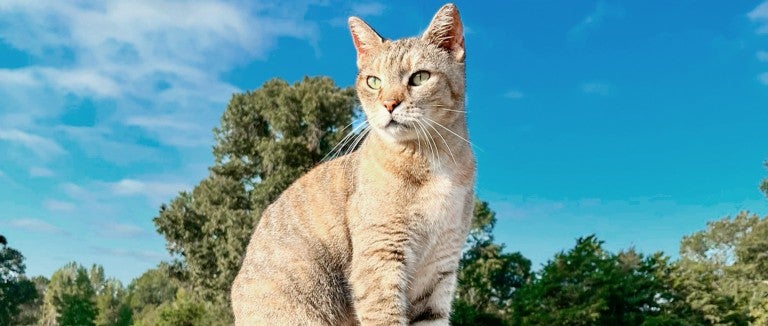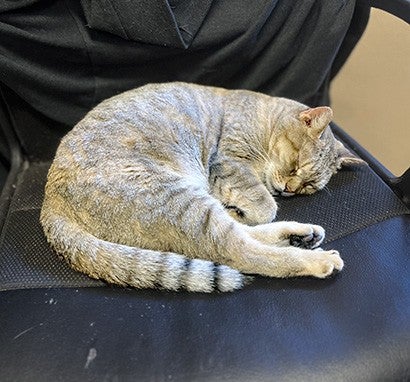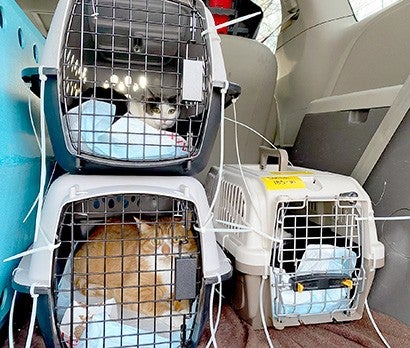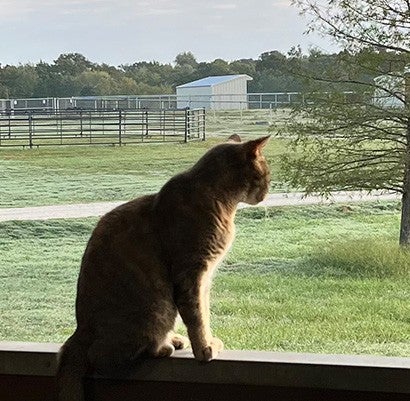Around a decade ago, Black Beauty Ranch staff members found a tabby cat wandering the property. The HSUS sanctuary had hundreds of animals—including horses, pigs, bison and tigers—but a domestic cat was an odd sight. After realizing she had likely been dropped off by someone who could no longer care for her, the team decided to keep her.
The cat, now named Felicia, lives at the sanctuary’s equine center (far from wild animals for her safety) and spends her days exploring the stables and receiving attention from staff. The equine team cares for her daily needs and sanctuary veterinarians provide medical care.
She’s taken to the role of barn cat quite well. Maybe a little too well. “I would describe her as a diva,” jokes Christi Gilbreth, senior coordinator of outreach and development.
Want more content like this?
This was written and produced by the team behind All Animals, our award-winning magazine. Each issue is packed with inspiring stories about how we are changing the world for animals together.
Learn MoreSubscribe



